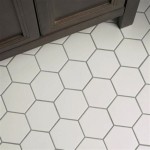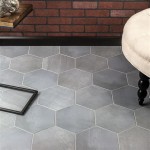How to Remove Tile From a Wall Without Damaging Drywall
Removing tile from a wall, particularly when that wall is constructed of drywall, requires a strategic approach. Drywall, also known as gypsum board, is a relatively soft material. Aggressive tile removal techniques can easily damage the paper facing and the gypsum core, necessitating extensive repairs. The objective is to detach the tile while minimizing the stress transferred to the drywall beneath. This article outlines a methodology for achieving this goal, focusing on tools, techniques, and precautionary measures.
Before initiating the removal process, it is crucial to assess the installation. The type of adhesive used, the age of the installation, and the condition of the grout lines all influence the approach. Generally, older installations with aged grout are easier to remove than newer installations with epoxy-based grouts. A visual inspection will reveal any existing damage to the grout or tile, which can indicate potential weak points that can be exploited during removal.
Preparing the work area is another important initial step. This includes covering the floor and any nearby fixtures with drop cloths to protect them from debris. Wearing safety glasses and gloves is essential to protect against flying tile fragments and grout dust. A dust mask or respirator is also recommended, especially for older tile installations where asbestos may be a concern (consult a professional for testing if asbestos is suspected). Good ventilation is also crucial. Open windows or use a fan to circulate air and prevent the build-up of dust.
Key Point 1: Softening the Adhesive
The primary challenge in removing tile from drywall lies in overcoming the bond created by the adhesive. Various techniques can be employed to soften or weaken this bond, reducing the force required to detach the tile and minimizing the risk of drywall damage. One common method involves using a specialized grout removal tool to carefully remove as much grout as possible from around the tiles. This creates space for moisture and solvents to penetrate and weaken the adhesive. Grout removal tools range from manual scoring tools to oscillating multi-tools equipped with grout removal blades. The choice of tool depends on the type of grout and the user’s experience.
Once the majority of the grout has been removed, applying a softening agent can further weaken the adhesive. Several options exist, each with varying degrees of effectiveness and potential impact on the drywall. Steam is a common and relatively safe option. A wallpaper steamer, held close to the tile surface, can introduce moisture that penetrates through the grout lines and softens the adhesive. The steam needs to be applied for several minutes per tile, allowing the heat and moisture to work their way behind the tile. Another option is to use a specialized adhesive remover. These are typically solvent-based and are designed to dissolve or soften the adhesive. When using chemical adhesive removers, it is imperative to follow the manufacturer’s instructions carefully and to test the product in an inconspicuous area first to ensure that it does not damage the drywall or cause discoloration. Always ensure adequate ventilation when using solvent-based removers.
Another technique, particularly useful for smaller areas, involves using a heat gun. The heat gun should be used cautiously and kept moving to avoid overheating the tile or drywall. The goal is to warm the adhesive enough to soften it without scorching the drywall or causing the tile to crack. The heat should be applied evenly across the tile surface for a period of time, followed immediately by an attempt to pry the tile loose.
Key Point 2: Controlled Tile Removal Techniques
Once the adhesive has been softened, the next step involves carefully removing the tiles. The key is to apply controlled force and to avoid sudden, jerky movements that can damage the drywall. A variety of tools can be used for this purpose, including a putty knife, a thin pry bar, and a specialized tile removal chisel. The choice of tool depends on the size and type of tile, as well as the user’s comfort level.
When using a putty knife or thin pry bar, start by inserting the tool into a grout line at the edge of the tile. Gently tap the end of the tool with a hammer or mallet to work it further behind the tile. The objective is to gradually separate the tile from the drywall without tearing the drywall paper. Apply gentle, consistent pressure, working around the edges of the tile to loosen it evenly. If the tile resists, apply more heat or steam and try again. Avoid forcing the tool, as this can damage the drywall or crack the tile.
A specialized tile removal chisel is designed with a wider, flatter blade that distributes the force more evenly. This can be helpful when removing larger tiles or tiles that are particularly well-adhered. Position the chisel at an angle along a grout line and gently tap the end with a hammer. Work around the edges of the tile, gradually loosening it until it can be removed. The chisel should be sharp, but not overly aggressive, to prevent damage to the drywall.
For particularly stubborn tiles, consider using an oscillating multi-tool with a scraper blade. This tool vibrates at high speed, allowing the blade to slip between the tile and the drywall, separating them with minimal force. Exercise caution when using this tool, as it can easily damage the drywall if not used properly. Start with a low speed and gradually increase it as needed. Keep the blade flat against the drywall and avoid applying excessive pressure.
As each tile is removed, carefully inspect the back of the tile and the drywall surface. If the adhesive is still firmly attached to the drywall, use a putty knife or scraper to gently remove as much as possible. Avoid using harsh solvents or aggressive scraping techniques that can damage the paper facing of the drywall.
Key Point 3: Drywall Repair and Preparation
Even with the most careful removal techniques, some damage to the drywall is almost inevitable. The extent of the damage can range from minor tears in the paper facing to larger gouges in the gypsum core. The goal is to repair any damage and prepare the surface for the installation of new tile or other wall covering.
For minor tears in the paper facing, apply a thin coat of joint compound (also known as mud) using a putty knife. Feather the edges of the compound to blend it smoothly with the surrounding wall surface. Allow the compound to dry completely, then sand it lightly with fine-grit sandpaper to create a smooth, even surface. Repeat this process as needed until the repair is invisible.
For larger gouges or holes in the drywall, a more extensive repair is required. Start by removing any loose or damaged drywall. Cut a patch of new drywall that is slightly larger than the hole. Apply joint compound to the edges of the hole and carefully press the patch into place. Use drywall screws to secure the patch to the wall studs or furring strips. Apply several coats of joint compound, feathering the edges to blend the patch seamlessly with the surrounding wall surface. Allow each coat to dry completely before sanding and applying the next coat.
Once all repairs have been completed, prime the entire wall surface with a quality drywall primer. This will seal the repairs, provide a uniform surface for the new tile or wall covering, and improve adhesion. Allow the primer to dry completely before proceeding with the next step.
Finally, consider the state of the remaining adhesive residue. Depending on the type of adhesive and the extent of the residue, it may be necessary to apply a skim coat of joint compound over the entire wall surface to create a perfectly smooth and even base for the new tile. This is particularly important if the new tile is significantly thinner than the old tile, as any imperfections in the wall surface will be visible through the tile.
Proper planning and execution are paramount. Taking the time to soften the adhesive, employing controlled removal techniques, and meticulously repairing any damage will yield results that minimize drywall impact and ensure a professional finish for the subsequent installation.

Diy How To Remove Ceramic Tiles Off Drywall

Easy Diy Guide On Removing Tiles From Walls Fantastic Handyman Au

Diy How To Remove Ceramic Tiles Off Drywall

How To Remove Wall Tiles 11 Steps With Pictures Wikihow

How To Remove Tile Backsplash Without Damaging Drywall Twelve On Main

Removing Backsplash And Repairing Drywall Made With Grace Grit

How To Remove Backsplash Without Damaging Drywall

How To Remove Tile Backsplash Without Damaging Drywall Twelve On Main

Removing Ceramic Wall Tiles From Shower

How To Remove A Tile Backsplash Homeserve Usa
Related Posts








